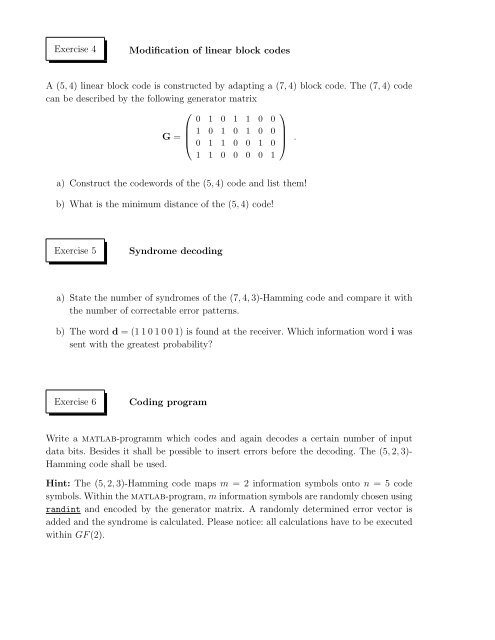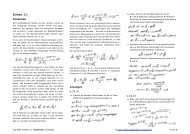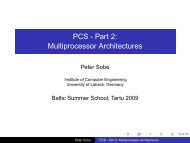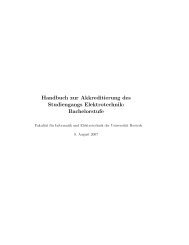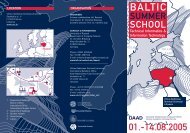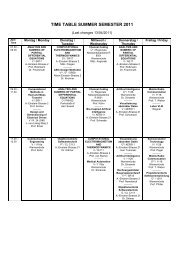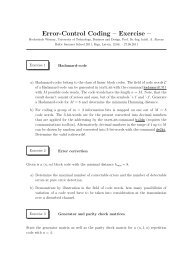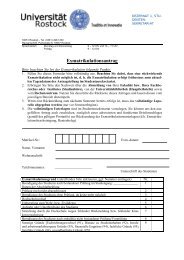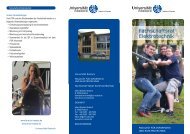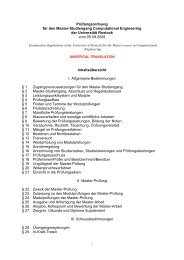Channel Coding â Exercise I
Channel Coding â Exercise I
Channel Coding â Exercise I
Create successful ePaper yourself
Turn your PDF publications into a flip-book with our unique Google optimized e-Paper software.
<strong>Exercise</strong> 4<br />
Modification of linear block codes<br />
A (5, 4) linear block code is constructed by adapting a (7, 4) block code. The (7, 4) code<br />
can be described by the following generator matrix<br />
⎛<br />
⎞<br />
0 1 0 1 1 0 0<br />
G = ⎜ 1 0 1 0 1 0 0<br />
⎟<br />
⎝ 0 1 1 0 0 1 0 ⎠ .<br />
1 1 0 0 0 0 1<br />
a) Construct the codewords of the (5, 4) code and list them!<br />
b) What is the minimum distance of the (5, 4) code!<br />
<strong>Exercise</strong> 5<br />
Syndrome decoding<br />
a) State the number of syndromes of the (7, 4, 3)-Hamming code and compare it with<br />
the number of correctable error patterns.<br />
b) The word d = (1 1 0 1 0 0 1) is found at the receiver. Which information word i was<br />
sent with the greatest probability?<br />
<strong>Exercise</strong> 6<br />
<strong>Coding</strong> program<br />
Write a matlab-programm which codes and again decodes a certain number of input<br />
data bits. Besides it shall be possible to insert errors before the decoding. The (5, 2, 3)-<br />
Hamming code shall be used.<br />
Hint: The (5, 2, 3)-Hamming code maps m = 2 information symbols onto n = 5 code<br />
symbols. Within the matlab-program, m information symbols are randomly chosen using<br />
randint and encoded by the generator matrix. A randomly determined error vector is<br />
added and the syndrome is calculated. Please notice: all calculations have to be executed<br />
within GF (2).


